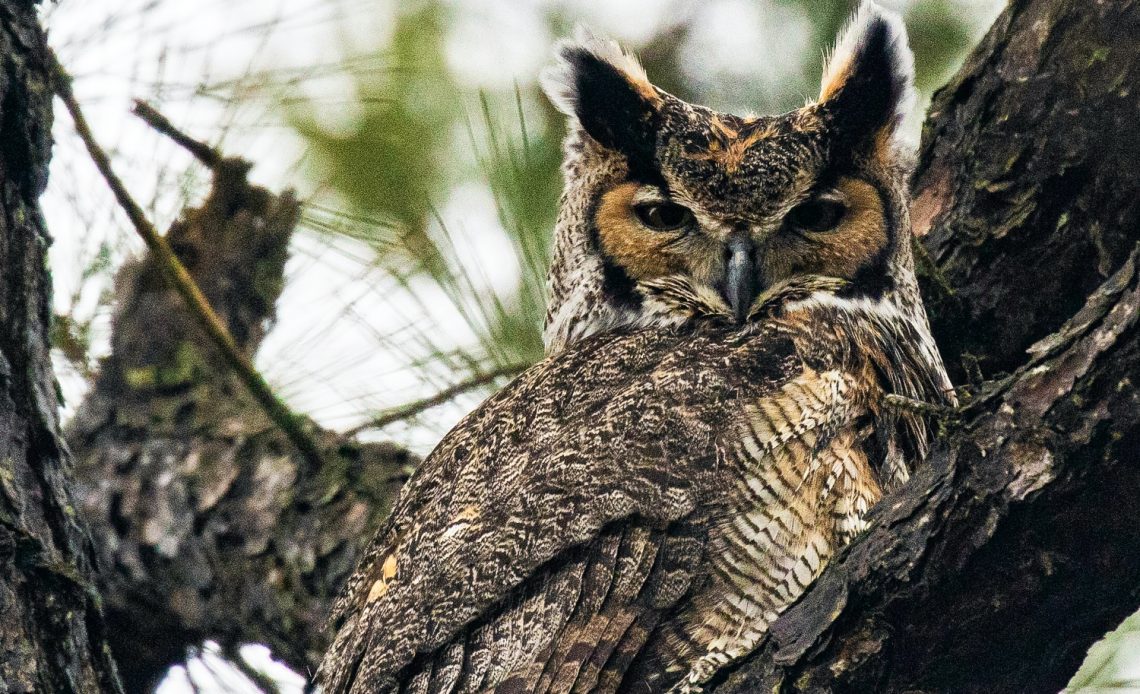

We’re here to help! Wild Yards is a completely free website that is 100% dedicated to helping you create a wildlife-friendly, sustainable yard. Read more
WildYards is reader-supported. When you buy a product through a link on our site, we may earn a comission. Every product is independently selected by our (obsessive) editors and our reviews are unbiased and objective. Read more about our mission or our privacy policy.
With their intricately patterned brown plumage and intense golden eyes, great horned owls are imposing birds of prey. Easily identified by the two horn-like tufts of feathers sticking out on either side of their heads, great horned owls are among the largest owls in North America, measuring 18 to 24 inches in length, and with impressive wingspans of 3 to 5 feet. If you’d like to bring more of these beautiful birds to your backyard, you may be wondering if a great horned owl nesting box will do the trick.
Great horned owls are not as willing to use nesting boxes as screech owls or barn owls. If you want to give the great horned owls in your area a nice home to roost in, consider building a nesting cone using a wire form to weave together sticks, twigs, and branches.
Do great horned owls build nests?
Like other owls, great horned owls do not build nests. Instead, they look for tree hollows, fallen logs, cliff edges, and rock crevices to roost in. Sometimes, great horned owls will make their homes in abandoned sheds or other man-made structures. If none of these options are available, a great horned owl may wind up roosting on the forest floor.
Even though they don’t build homes for themselves, great horned owls are more than happy to occupy nests left behind by other birds of prey. Suburban great horned owls make their homes in old crow or squirrel nests, but their rural counterparts prefer nests built by other raptors, including hawks and eagles.
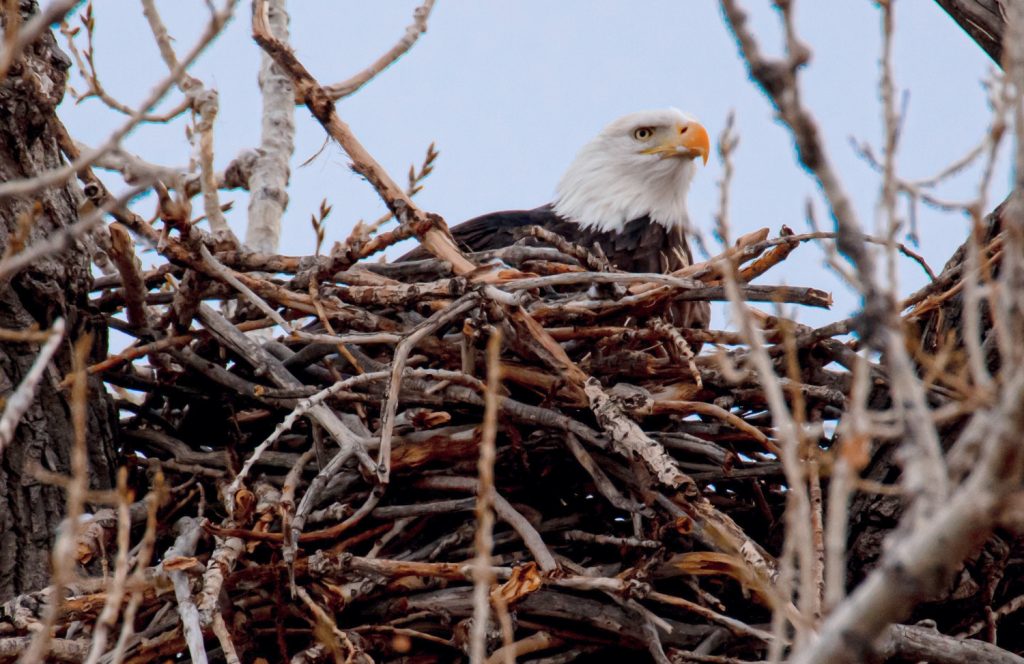
Do great horned owls use nesting boxes?
Great horned owls lay 1 to 4 eggs anywhere from late fall to late spring, depending on their region. They prefer large roosts that have plenty of room to move around in. Though it’s not unheard of to find these owls roosting in a large nesting box, they aren’t as spacious as great horned owls would like them to be. If you want to attract great horned owls to your backyard, you’re far better off installing a nest cone.
What is a nest cone?
Nest cones are man-made nests similar to those left behind by birds of prey. These open cavities provide local great horned owls with additional housing. Constructing a nest cone for your backyard owls is a much different process than building an owl box. But, actually, nest cones are a lot easier to build than you might think.
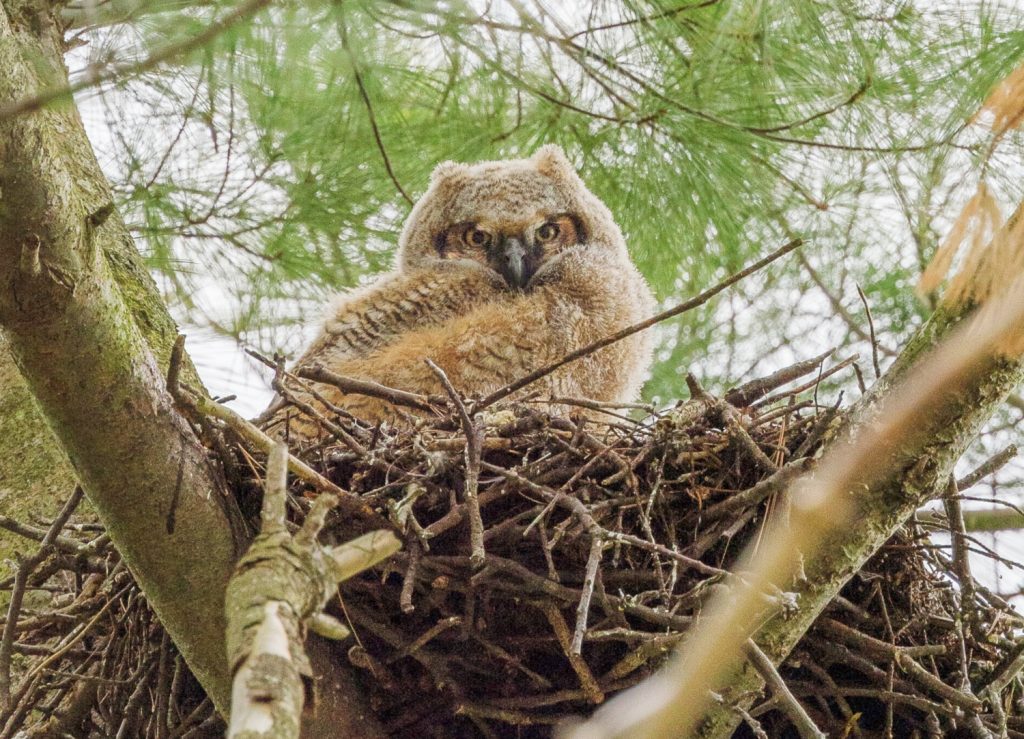
How to build a wire nest cone
Building a nest cone isn’t complicated. You don’t have to have any carpentry skills, just patience, and ingenuity. Start by cutting 2 sections of 24-inch chicken wire 4 to 5 feet in length. Using 2-inch pieces of .035-inch welding wire (or something similar), fasten the chicken wire sections together horizontally to create one big sheet of wire panel.
Once the pieces have been “sewn” together, shape the wire into a large cone, trimming away excess wire or folding it over on itself. If you find the wire too difficult to work with, you can squish it into a bowl instead. This is the foundation of your nest, and it should measure roughly 20 inches deep and be 3 or 4 feet in diameter when you’re finished.
When the base is ready, use twigs and limbs to weave in between the chicken wire, as if you were making a basket. As you weave more and more sticks into the chicken wire, the cone will become stiffer. To make the cone easier to work with, try to use softwoods. Willow twigs work particularly well, but birch is another good choice.
When you’re finished, the inside of the nest should be covered in sticks with no hint of wire shining through the gaps. It’s okay to leave wire showing on the outside of the nest, but if you want your nest cone to blend in with its surroundings, consider adding more twigs to conceal the chicken wire.
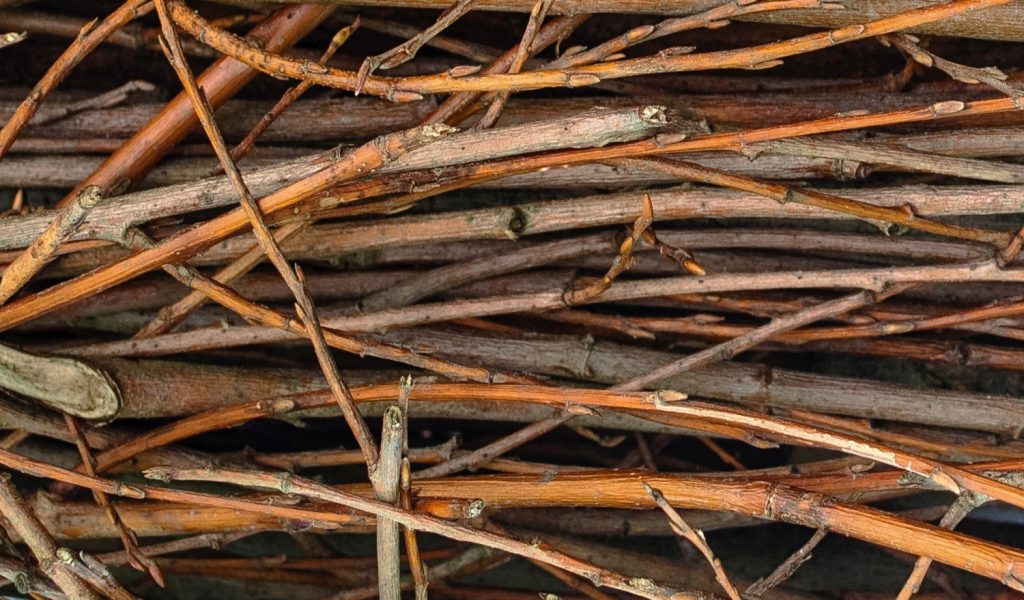
More ideas for nest cones
Chicken wire is malleable, so it’s a great foundation for a nest cone. But, really, you can build a nest in anything. Metal tubs, old water troughs, and even decorative planters can be used to make a base for a nest.
Whichever base you choose, simply fill it with loosely woven twigs and branches. Great horned owls aren’t especially picky about nest quality, so they won’t mind if your twig-weaving skills aren’t up to snuff. You can line the nest with wood chips, leaves, or straw to give it some extra padding.
Be sure to drill holes into the bottom of the nest base. It’s important to make sure rainwater can escape so the basin won’t fill up. Drainage holes also aid in air circulation to prevent insects from breeding, as bugs can kill young owls.
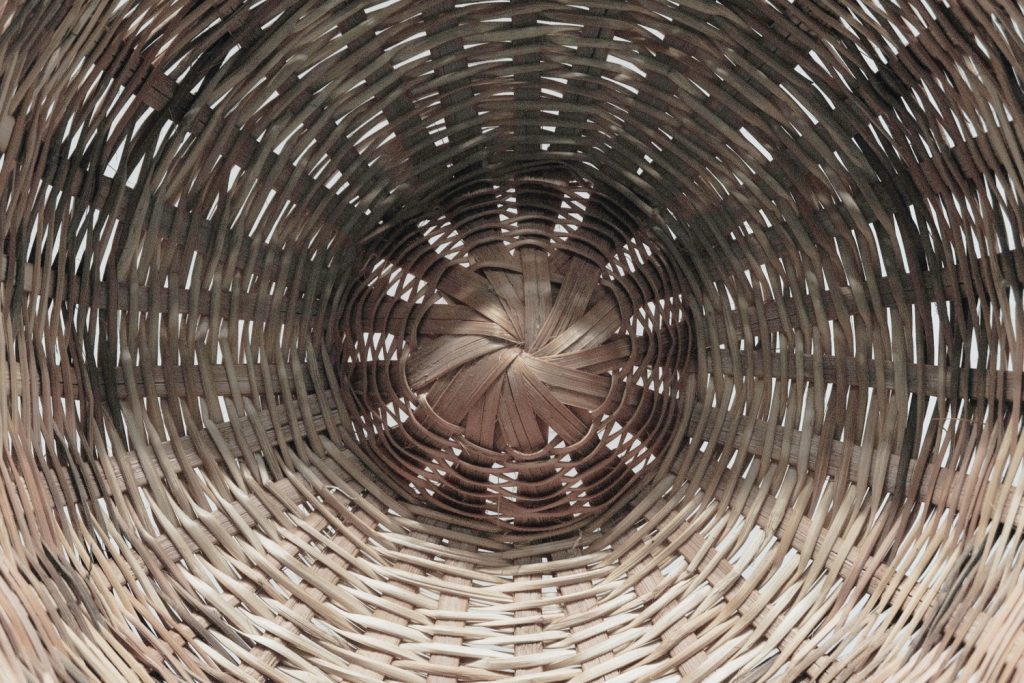
Can you buy a nest cone?
If you’re not up to building a nest cone, occasionally you can find them for purchase online. If you’re having trouble tracking down a nest cone, or if you don’t have the budget to buy one, you may still have luck attracting great horned owls by installing an oversized owl box.
Most commercially available owl boxes run small. While they’re roomy enough for tiny screech owls, which only grow 10 inches in length, these boxes are far too cramped for large great horned owls.
Try looking for owl boxes that are advertised as being ideal for barred owls. At 24 inches in length, these owls are just a bit smaller than great horned owls. Barred owl boxes offer more space for great horned owls to move around, so they may be willing to roost in them, particularly if other housing options are scarce.
Where should you install your nest cone?
Hawk, eagle, and other raptor nests are usually 15 to 45 feet up. Birds of prey like to nest in tree tops, where they can see what’s happening on the ground below. It’s best to put your nest cone as high up as possible to mimic the real bird nests that great horned owls like to occupy.
The tree you choose to house your nest should be medium in size, preferably an evergreen or hardwood. Look for crouches that will support your nest cone naturally, and use screws to secure the nest cone in place. If you have a large property, leave 1.5 miles of distance between nest cones on all sides. Great horned owls are highly territorial, so spacing the nests will help prevent competition.
If you can’t find a suitable place for the nest cone, you may need to build a platform to hold it. Cut a square or rectangular piece of plywood large enough to support the base of the nest cone. Use 2×4 blocks 1 to 2 feet in length to brace the platform at a 45-degree angle to the tree, and use 3-inch deck screws to anchor the supports in place. Since the owls won’t be touching the platform, it’s safe to use treated lumber.
Once the platform is ready, you can set your homemade owl nest on top of it. Use screws to secure the nest. If you’re installing a nesting box instead of a nest cone, hang it 20 feet up on a tree. Ideally, the box should face south, away from the north winter winds, or east, to catch the warmth of the rising sun.

What else can you do to attract great horned owls to your yard?
Giving the great horned owls in your neighborhood a safe place to roost is a great way to encourage them to visit. But it’s not the only thing you can do to attract these incredible birds to your yard. Consider installing a bird bath, which will not only keep the owls hydrated but will also provide them with hunting opportunities.
Leaving your grass long and keeping old lumber piles scattered around will give local mice and rats a nice place to live. And where there are rodents, there are owls.
Great horned owls do most of their hunting in the late evening and early morning hours, so be sure to turn off your porch lights when it gets dark to provide them with ideal hunting conditions. Be sure to limit outdoor activities during these periods, too, as great horned owls prefer to avoid contact with humans.
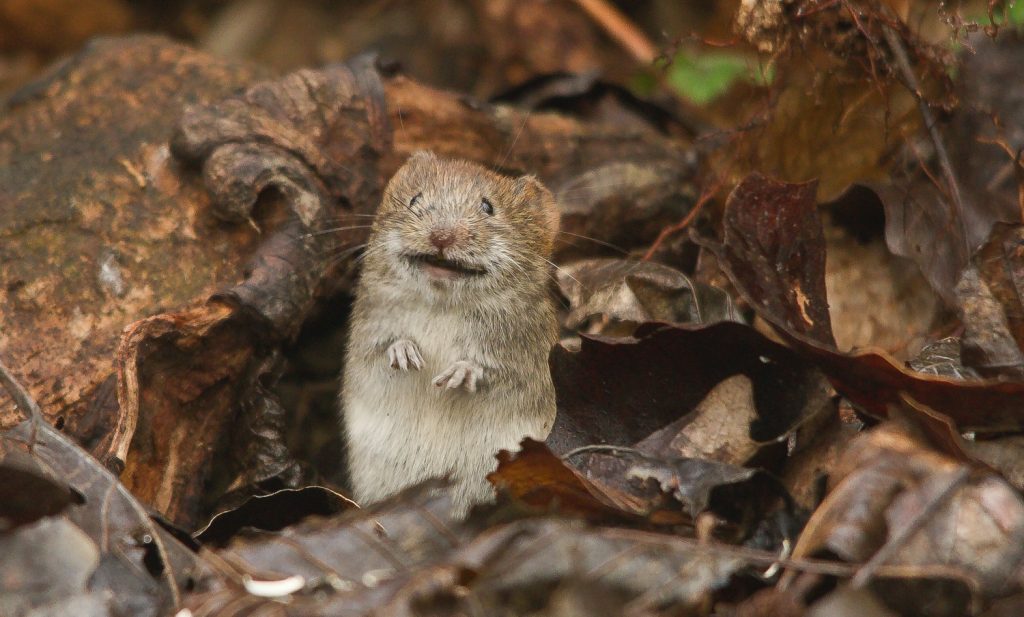
What are the potential downsides to attracting great horned owls?
Before you commit to attracting great horned owls to your backyard, there are a few things you should consider. While these owls frequently prey on squirrels, rabbits, and snakes, they’ve also been known to fly off with pets. Cats and small dogs are at risk of becoming a local owl’s next meal, so if you keep your pets outdoors, make sure they’re safe and secured.
Owls are also a tremendous threat to chickens. Even though it’s widely believed that owls only kill what they can eat, backyard farmers say differently. Great horned owls will claw at chickens through their wire coops, using their powerful talons to tear them apart. So if you raise chickens, ducks, quail, or any other fowl, consider carefully before investing in an owl box or nest cone.
Overall, attracting great horned owls isn’t much different than attracting any of the other types of owls. By providing for their basic needs, and by giving them access to their preferred roosting spots, you’ll be doing everything you can to encourage these magnificent birds to take up residence on your property.
